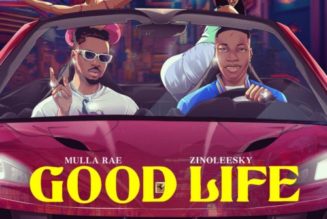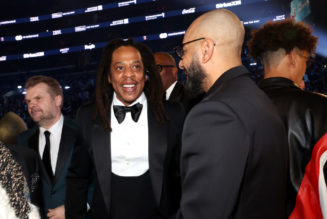Tainy is eloquent and calm, and thinks through every word before constructing sentences that back up his success over two decades. Without a trace of over-confidence, Tainy —whose real name is Marcos Efraín Masis Fernández — has achieved everything he ever dreamed of since he was a teenager making music in Puerto Rico. “Reggaeton was not something we listened to around my house,” he says after talking about the importance the church had in his family. Around then, in his adolesence, he met Nely “El Arma Secreta,” a legendary producer who had already been in reggaeton for some years.
“He was my first gateway into production. I’ve always tried to follow in his footsteps,” Tainy says. His closeness with Nely, coupled with an enormous confidence in his skills behind the computer, would later lead him to the studio with Luny Tunes.
Lee esta entrevista en español.
Nearly 20 years after Tainy met Luny Tunes — the Dominican producer duo that boosted the urban genre into worldwide recognition — and after a long list of global hits, he has managed to surpass his own legacy with the release of his debut solo album, Data. He’s done so without hesitation and with great technical and artistic prowess. In his hotel suite in Mexico City, we talk about the impact and development of his career, the worldwide recognition of his album, and his role as an independent entrepreneur in the music business.
Although Tainy started out listening to hip-hop artists, his interest in sound production became his true passion. His influences were marked from the beginning by producers such as Timbaland, The Neptunes, and Dr. Dre. From their work, he understood the role of a producer in hip-hop. At around 14 years old, he began experimenting with basic tools such as Fruity Loops, where he started developing his first ideas. “I felt a connection, and I realized that was what I wanted to do for the rest of my life,” he remembers. “At the beginning, I didn’t even have a computer.”
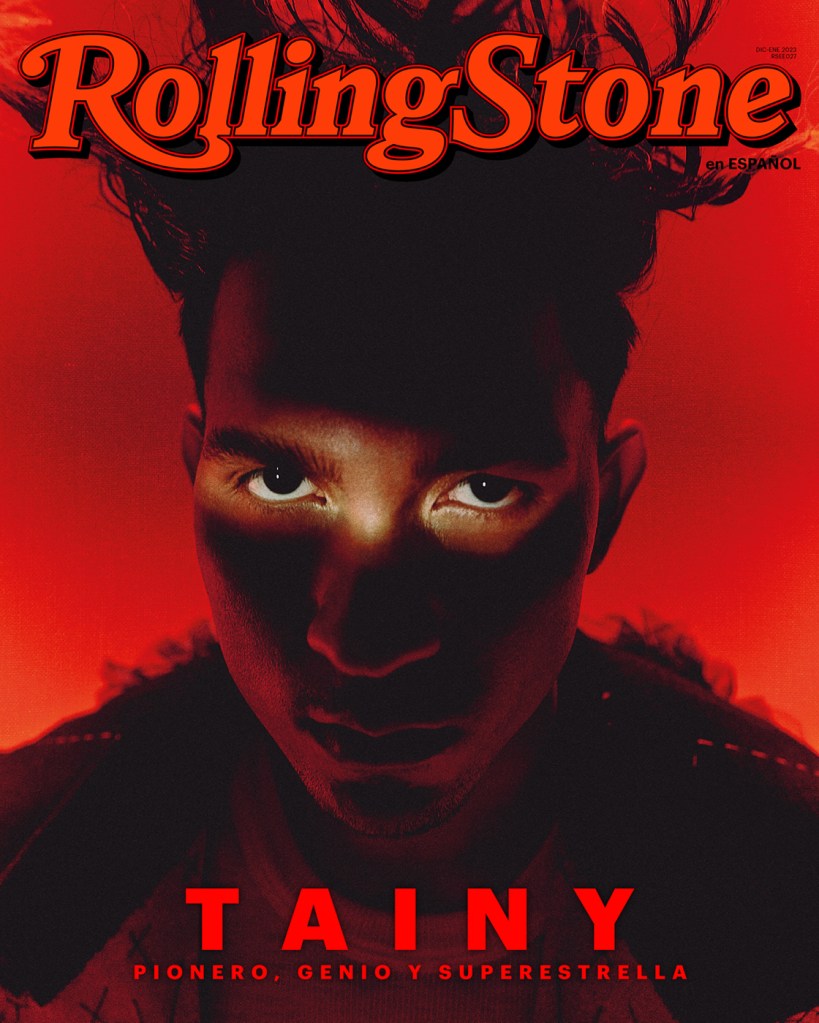
Photograph by Cesar Balcazar
The fact he was born in Puerto Rico reflects Tainy’s sound and artistic spectrum, largely due to musical diversity on the island, but also because of his own family home. His father is from Costa Rica, and his mother — with whom he grew up — is Dominican. That’s why merengue, pop ballads, and bachata songs were the main things they listened to at home. “My mom has three sisters, and each has a different taste.” Artists like Juan Luis Guerra, Selena, or Maná played throughout his childhood. “There was a little bit of everything. I feel that’s where music started for me,” Tainy recalls.
Over time, his group of friends began listening to more and more genres like hip-hop and reggae. But he couldn’t listen to this type of music at home and had to listen to whatever his neighbors played out loud. Don Chezina, Sir Speedy, or Alberto Stylee were booming in his neighborhood and ended up being his first influences. However, the first to catch his attention towards the urban genre was the rapper Vico C. Vico C had a positive message and not very explicit lyrics that Tainy could listen to at home. At the same time, a wave of American rap was arriving on the island. Artists like Eminem influenced him aesthetically and sonically.
Working with Nely he got to know in-depth what it was like to produce tracks for hip hop and reggaeton songs. “He would ask me to make adjustments. ‘Change this,’ ‘This is out of tune,’ ‘This is not in time,’ ‘This is clashing with this frequency.’” While learning from him, Tainy tried to impress him with his tracks, so every Sunday, he would bring his music to church on a USB for Nely to listen. In a stroke of good luck and talent, the producer liked one of the tracks. “That’s how the story and my career begin.” The following week, he met Luny Tunes, and the duo asked him to create an instrumental right in front of them. “I created something but I was nervous as hell,” he recalls. They immediately decided to sign him.
Being able to bring all those elements together was key to defining his sound and catching the attention of the big artists who were hanging around the studio. At the time, it was revolutionary, and Tainy didn’t want to stop impressing himself. It’s most likely that his success has something to do with the genuine respect he feels for the art and how it can be the core of pop. Tainy eventually earned the trust of artists like Wisin y Yandel and Hector el Father, who embraced him as the producer of their biggest albums, and that’s when Tainy began his path into the Spanish-language music industry.
In 2004, songs like “Pam Pam,” by Wisin y Yandel and “Gasolina” by Daddy Yankee made reggaeton, for the first time a hit on the pop music charts throughout Latin America, and the genre began it’s ascent around the world. “Little by little, the phenomenon was growing and learning, not only the artists but us, the producers,” Tainy says. The urban genre assumed the use of samples, and producers like Tainy brought avant-garde and sounds from other genres, which had not yet been mixed with classic dembow and reggaeton.
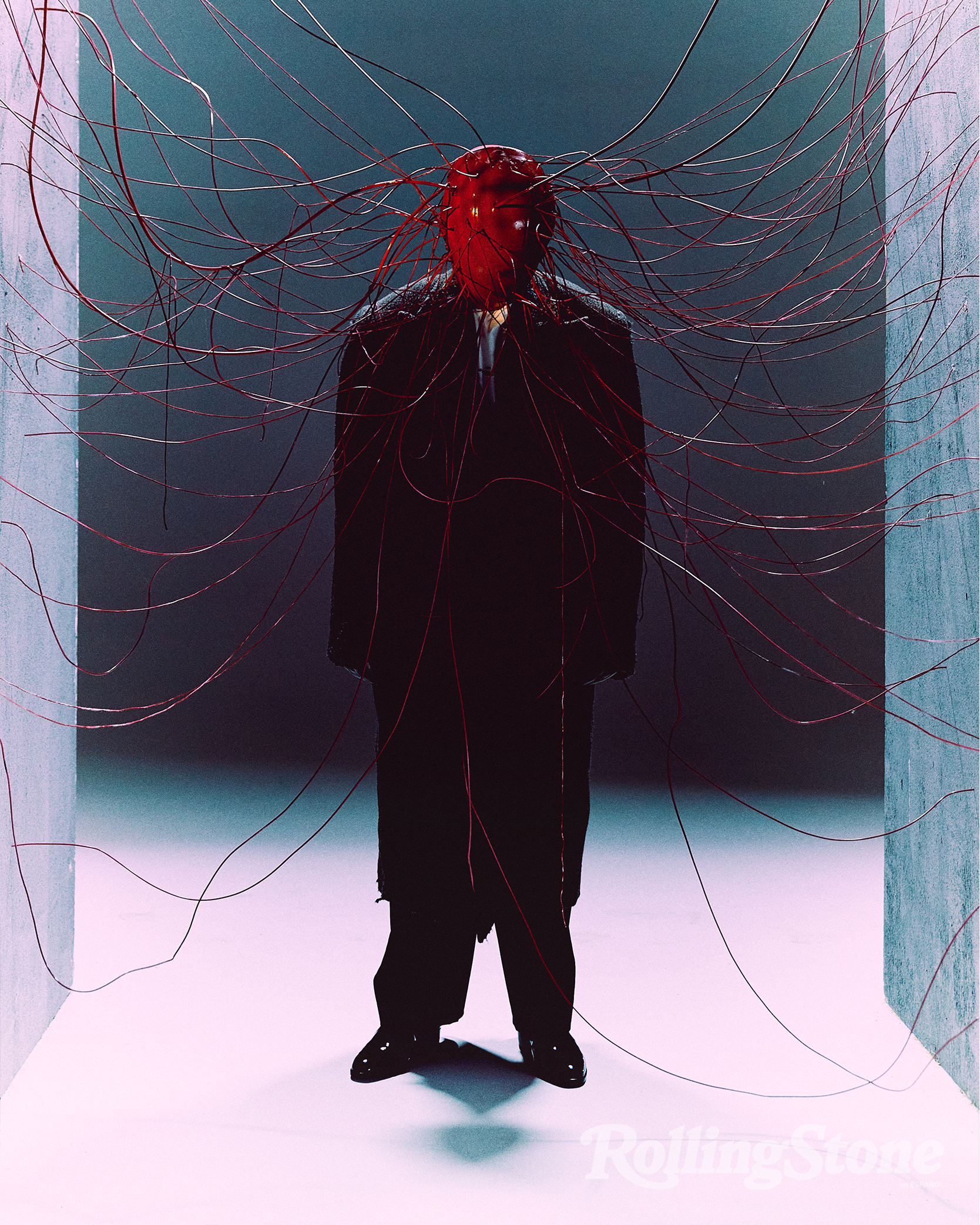
Photograph by Cesar Balcazar
The main factors of success at the beginning of the century have to do with the various characteristics of the pioneers in the genre; Artists like Don Omar, Tego Caldron, and Daddy Yankee were all different from each other, however, the breaking point may have to do with the robustness of the production that Luny Tunes, and later Tainy injected into the genre. Until then, reggaeton was basically seen as music for clubs due to its rhythmic and catchy nature, but with songs like “Noche de Burial,” which also featured the collaboration of several artists, it was telling the world that it was consolidating itself as a genre. Tainy would have a prominent future.
For Tainy, connecting and starting to work with Luny Tunes was a turning point and departure in his career. “We had a keyboard, the Yamaha Motif, and it was iconic, because he defined the sound of Luny Tunes.” However, they needed to find their own identity. Tainy began experimenting with synthesizers and pop atmospheres, bringing avant-garde and futuristic sounds to the table for that time.
“I always liked that contrast, thinking about sounds that made me feel like it was a movie from the future,” he says, and it is consistent with what he has been doing in the music industry for the last 20 years. “I always liked that contrast between classic and new sounds, seeing how I can create some different sound or feeling,” he adds. At that point, the vision of Gustavo López and Machete Music, seeking to take the genre to the whole world, ended up being a safe bet. Still, they needed to reach wider audiences and soon, they’d make a mark in the U.S.
TAINY IS IN the Fillmore Theater dressing room, hours before his live performance at the Rolling Stone en Español Awards. He is accompanied by Álvaro Díaz, one of the most promising artists on the scene, and an entourage of five people.
His role as a producer has been transformed over two decades: “Before, my job was only to deliver a CD with five instrumentals, and if they chose one, then great, but that’s it.” He had little opinion or intervention in the development of a song. “I didn’t feel like a real producer.” His goal was to find the role of the producer who could direct an entire musical project from different fronts, and he found it little by little. “Now it’s about having a creative exchange. I feel that that is the most important thing, that is the true success of a song,” he says. And it makes sense when a song that transcends is connected in every element and detail so that it can be different from the others.
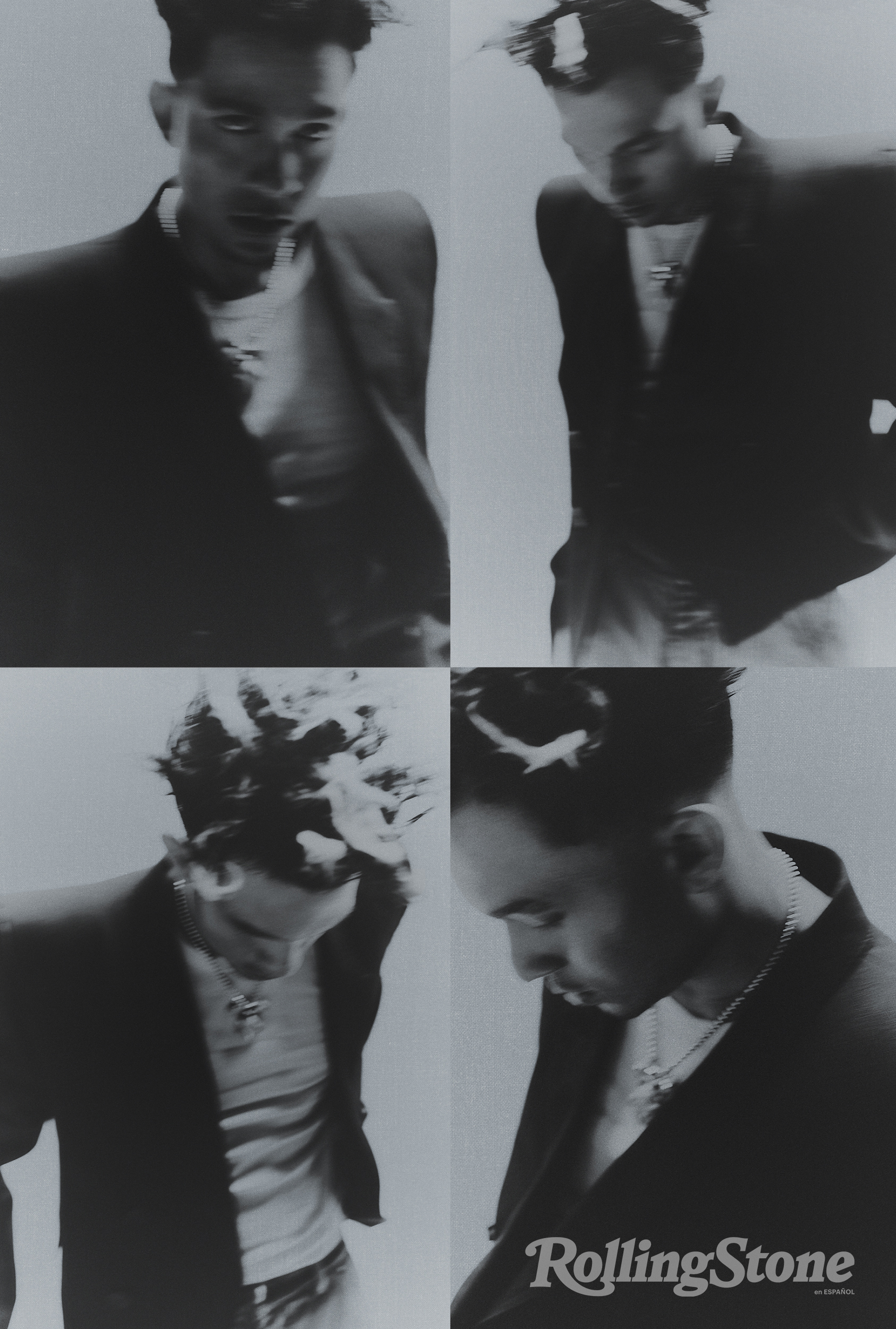
Photograph by Cesar Balcazar
As he matured in his process and gained experience as a producer, he recalls that he always wanted to make projects that he could direct in their entirety. It was something he learned from people like Timbaland, Pharrell Williams, Calvin Harris, and Skrillex, who launched solo projects and invited several artists to be part of the processes in which they had a leading role. “It’s not very good that they always have to look for you in the credits,” he says. However, this type of project lost the interest of the recording industry for a long time. “For a long time I was alone,” referring to the lack of a team. “I made music, but I also had to deal with the business.” And it’s never ideal for an artist to have to mix creativity with finances. Then, upon moving to Miami, he met his partner and manager, Lex Borrero, who from that moment joined forces with him to create a company with clear objectives.
“I’m super happy to take these kinds of risks,” he says, referring to finally releasing his album Data. “It’s incredible because it allows me to develop ideas and many things that I want to leave in the world.” Tje sentiment is consistent with the nature of the album, which was created without major pretensions, and ended up being one of the most important albums in Spanish of 2023. “It’s about, at least, leaving something that can influence any other creative.” Neon16, his talent agency and incubator of ideas, took a risk while remaining independent, and managed to surpass everything in the Latin industry.
Neon16 was built on understanding the space there is in this new generation for Latin music. Tainy explains the ideas was to have “an open mind to embark on other genres, wanting to propose, create new sounds and a different identity.” Lex and Tainy drew up a long-term work plan with the purpose of opening new doors for the community and Latin music, for Latin producers, and the urban genre. “Although it is not usual, we do it because we have the desire and the ideas. We want to propose something new,” he says, indicating the main objective of his company, which has been to open the way for a new generation of artists and creators in a culture that refused for years to recognize Latin hip hop as popular music and kept the genre marginalized.
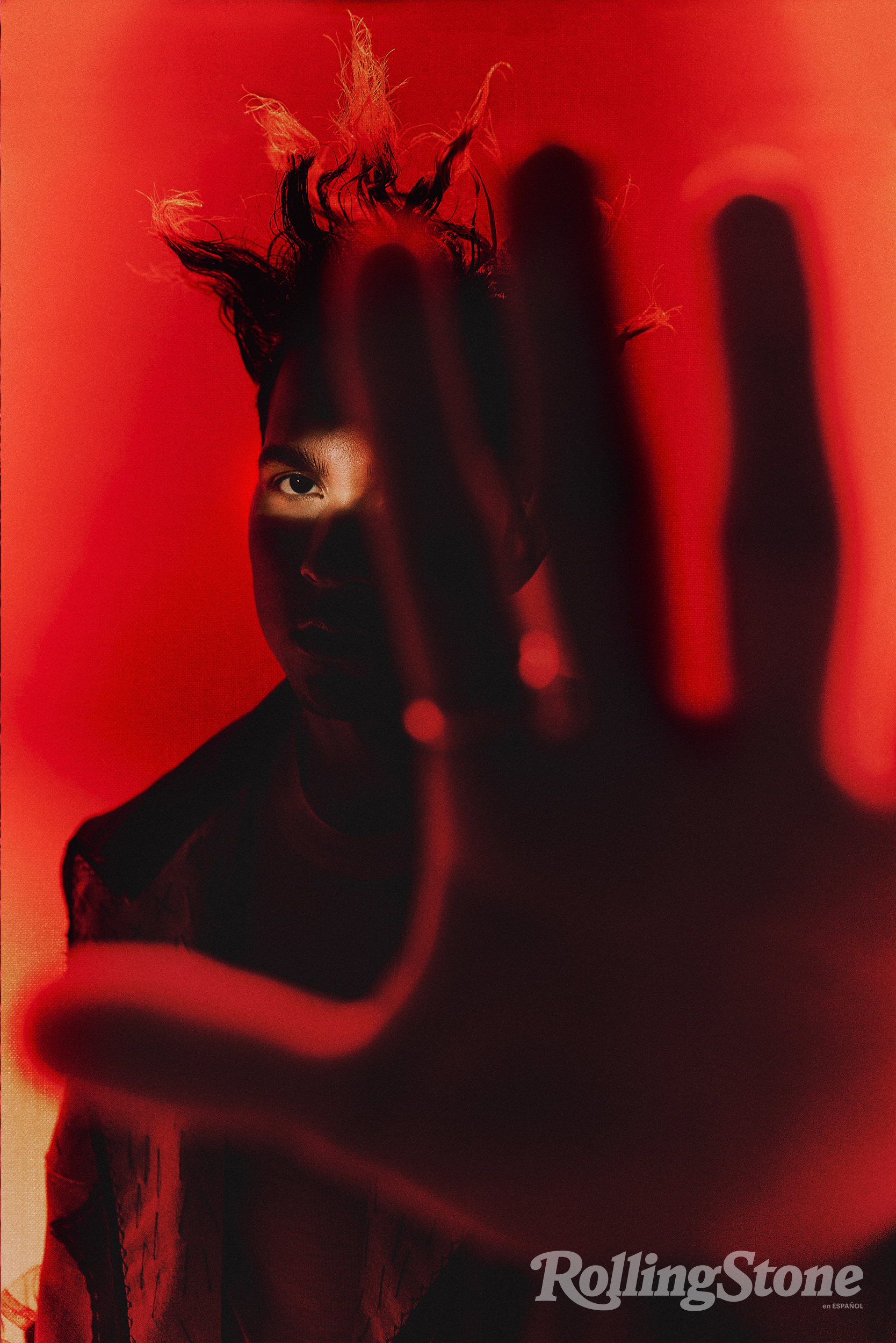
Photograph by Cesar Balcazar
“Being Latino and growing up in Puerto Rico, there were many things that I believed were not possible for a producer like m. I felt that only Americans had those types of opportunities,” he says. “As a Latino you give everything, but we felt there was a certain limit to what could be done.” However, Tainy and Lex have worked tirelessly to demonstrate that these limitations have been overcome through perseverance and a clear desire to put art above business.
And it is true that the limits have begun to disappear in times when the popular imagination includes so many Latinos becoming global phenomenons. “We wanted to awaken that in Latinos. We can be whatever we want in music and in any type of art,” Tainy says.
PABLO, TAINY’S MANAGER, reviews the screens while Tainy and Álvaro Díaz rehearse for their performance. His team is meticulous and does not skimp on the technical and artistic details. Meanwhile, Tainy checks the cameras from his cell phone in the dressing room. Rarely in a television show does a producer have the privilege of making a medley, so he’s putting all his attention into a show where music prevails. “For me it is incredible to see now that the album is out, and that the public has connected with different aspects,” he says. “It’s a dream come true.”
Data, published in July 2023, ended up being a declaration of artistic principles that redefines the success of Latin artists of the last decade. “The purpose of the album was to teach and demonstrate the growth from the beginning to what I am today,” Tainy confesses. In this album, Tainy was able to explore all the facets of art that making his own album represents. Elements such as aesthetics, visual art, anime, are elements that he had never taken into account when working with other artists. “Japan is a place that influenced me a lot in this particular project, and it has a lot to do with being a perfectionist, with respect for art.”
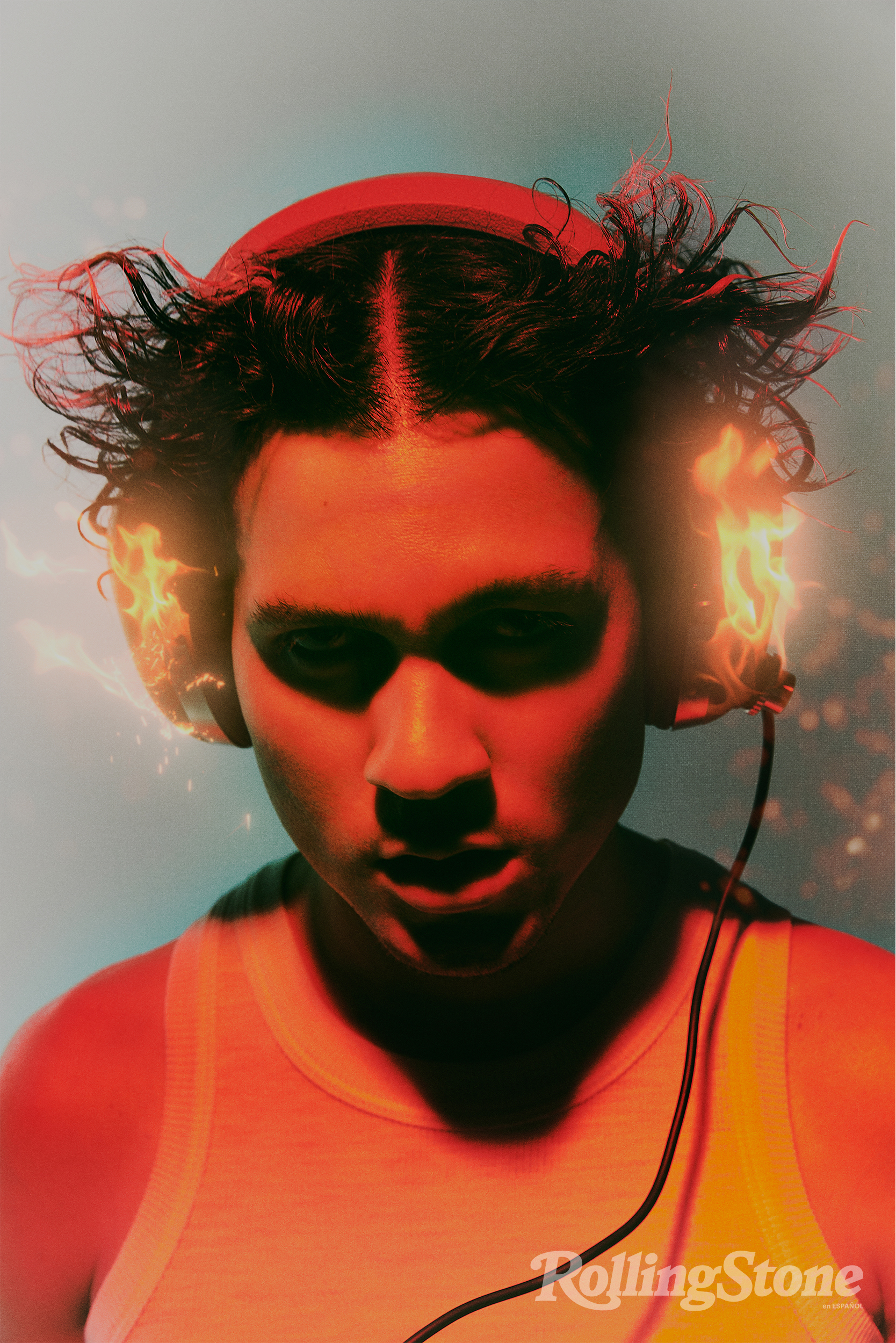
Photograph by Cesar Balcazar
On this project, the Puerto Rican producer had a different approach than what he had been doing with other artists; In principle he is not born from the need to create hits. In Data, no song was meant to create millions of streams, rather it fulfills a specific function within the album. “A catchy song is no longer enough for me. I wanted to develop all the ideas I had never been able to work on,” Tainy says. The magic of this album lies in the different nuances that artists from different genres, movements and sound waves bring to the table, creating a unique and diverse universe. “The theme is not constant because they are all different. The only constant during the album is me,” explains Tainy.
And although Data was not born from the desire to compete with the establishment of the Spanish-language industry, it is evident that the album was made with the purpose of creating a format that had not been done before in the Latin industry. “Every artist in the world must have that respect for an album, to work on each song with the same passion and respect, even if it is the last one,” Tainy says. Without farther ambitions he created a masterpiece around all the different nuances of current Latin music, capturing the essence of each of the invited artists, but imposing his avant-garde vision in all collaborations. “Sacrificio,” with Xantos, is a rap driven by a piano that breaks with established formats. “Desde Las 10,” featuring singer Kany García, lands the need for pop and melody in the urban environment, and samples of mastery like the Álvaro Díaz cut’ “Paranormal” defines the sound of the urban genre in the coming years. These collaborations are joined by great figures, such as Bad Bunny, Myke Towers, Arca, Daddy Yankee, Feid, Rauw Alejandro, and Julieta Venegas, among others.
Data leaves a very interesting message this year in the industry in Spanish: An independent album, made by a producer in his debut solo work, manages to surpass super-consolidated projects by great artists who had been the leaders for years, and who suddenly stopped working. “Maybe I don’t see the full gravity of what that means and, I’m not going to lie to you, I love the fact that the world could understand it,” Tainy shares. And although other proposals that have astronomical marketing investments continue to mark the lists, Data is positioned, indisputably, as the best album of the year in Spanish and one of the best globally, demonstrating that the popularity of the Latin community goes beyond luck, fashion or current trends.
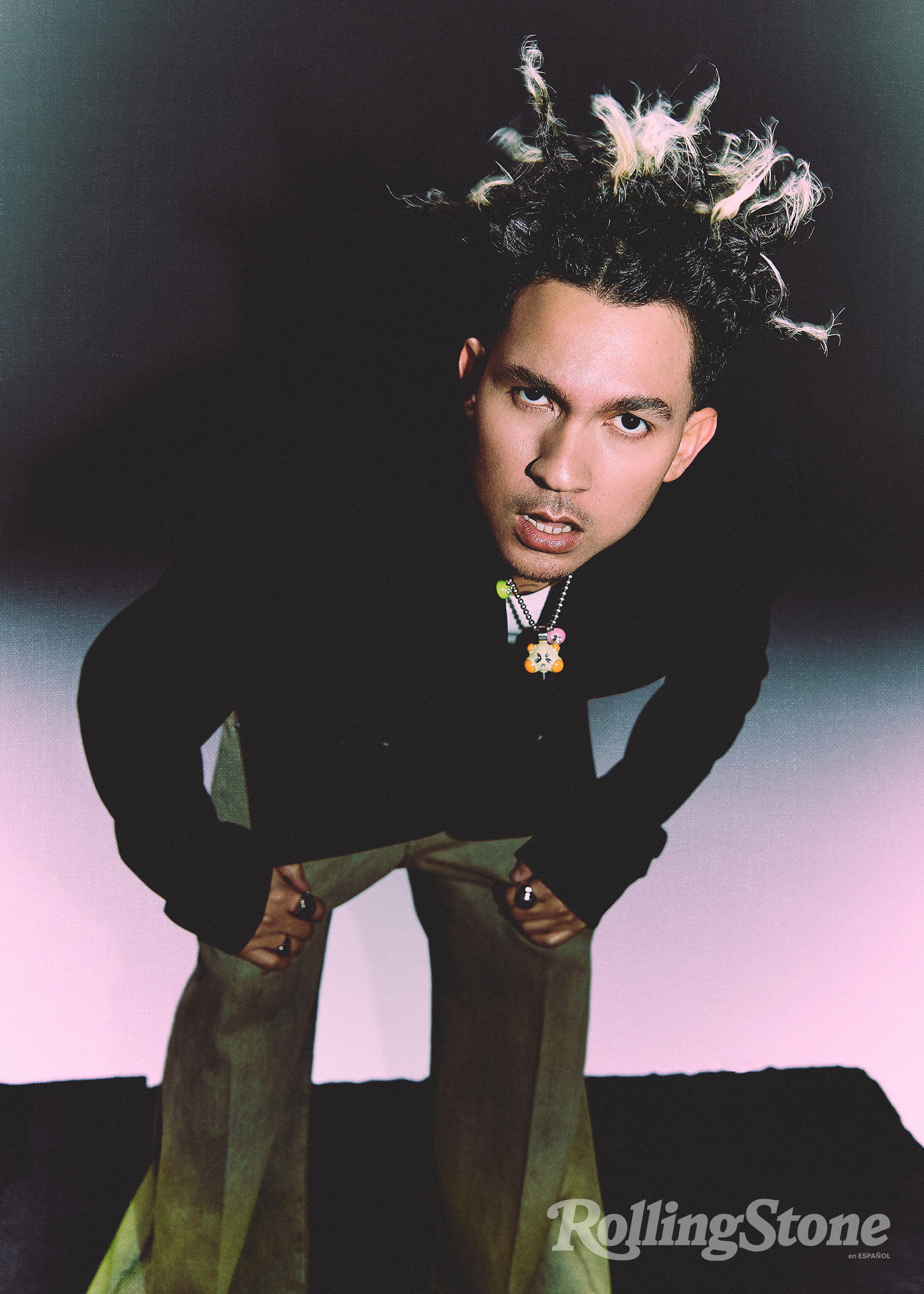
Photograph by Cesar Balcazar
It is an important moment for music in Spanish. Currently, emerging artists and those who aren’t commercial titans are making a difference and defining the patterns of immense fandom throughout the continent. The diversity of Hispanic music, which has deep roots, has shown that to remain at the top, technical, artistic, and historical support is required. “Now the doors are open for emerging artists who have something different to say,” says Tainy about the future of music in Spanish. “Propose something different, keep bringing different things, even if they are not what the genre is defining in that moment. It is having that diversity, and not getting burned with just one that works. Now there is too much talent and too many ideas to be able to continue moving towards the next thing.”
Tainy’s sound is unique and special. Navigating between avant-garde sounds, he has defined the sound of the genre in the last two decades, and from its beginnings he set the standards for the entire producer guild in the industry. His futuristic vision has been responsible for the mass scale of the genre globally and he’s been behind dozens of artists regarded as the kings of urban music, with their songs passing through the mastermind of the genius and pioneer. All of this has made him his own kind of superstar, placing him alongside great producers in the world; the character of Timbaland’s unique sound or the artistic diversity of Rick Rubin.
This year, Tainy received recognition as a pioneer at the Rolling Stone en Español Awards, a tribute to his work as an agent and leader in the community. His contribution to Latin music is unmatched and he laid the foundations for a genre to expand throughout the world. “I have my pioneers, artists who influenced me and made me who I am. Now to have my name with producers who came after me, and to see myself as a pioneer and influence for them, is an honor. It is an incredible award,” he acknowledges. At that moment Tainy, with his shy voice, shares his most genuine purpose as an artist: “That’s what your time on this Earth is for. Keep trying to discover new paths and causing different things.”
Production Credits
Creative Director: SQUID. Executive Producer: ALEJANDRO ORTIZ. Art Director & Fashion Editor: ANA CAROLINA GONZALEZ BORTOT. Assistant Director: DANIELA MARTIN. Lead Stylist: YASIRIA AYALA. Hair: GIANLUCA MANDELLI. Makeup: HANIC ARIAS. Assistant Photographer: FELIPE WALLIS, CARLOS MAYA. Digital Tech: BULLTECH MIAMI. Photo Editor: MISTER RAW STUDIOS. Video Editor: SQUID. Director of Photography: SAL MADRIZ. 1st AC: CLAUDIO ZALAYA. Gaffer: BRILEY GARGIS. Grip/Lighting Director: ROSS LOCKWOOD. BTS: ZACH DEER. VFX Studios: CAJA59. VFX Compositor: JUAN ROSARIO. Set Designer: GABRIEL DUQUE. Prop Master: MARIA LAURA CONVUCCIA. Set Dresser: JUAN MANUEL GOMEZ. Costume Designer/Assistant Stylist: CHARISSE KAMIR. Assistant Stylist: LULIE. General Producer: ANA CAROLINA GONZALEZ BORTOT. Line Producer: PAOLA LARRAMENDI. Production Assistant: ELIZABETH NORTON, CATRIONA WASTELL, NICHOLAS FERNANDEZ, EVGENY KOLSKIY. Studio Director: ANNA CLOUGH. Associate Producer: GABRIELLA CROWN, TRAVERS ROBERTSON, BRYAN DILLARD. Studio: MEDIA MONSTERS





